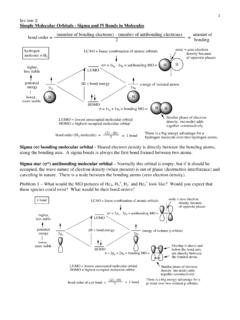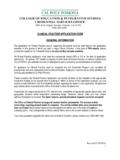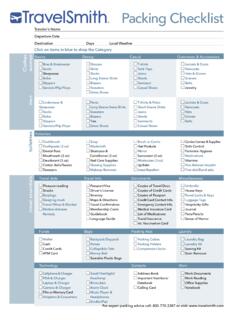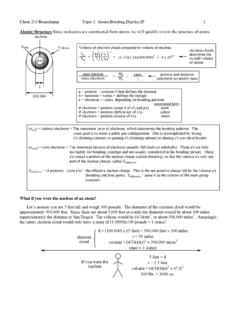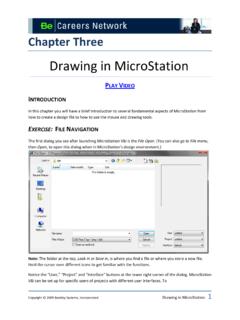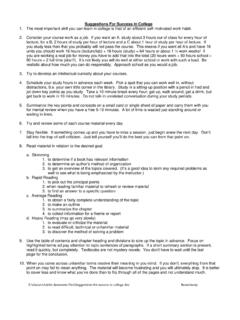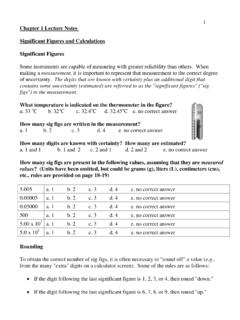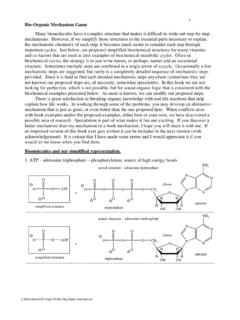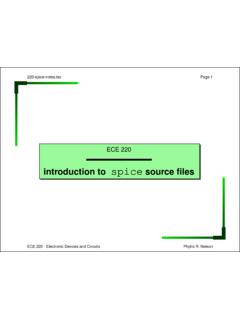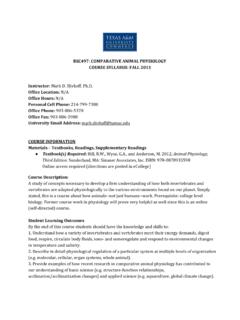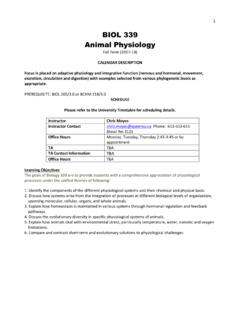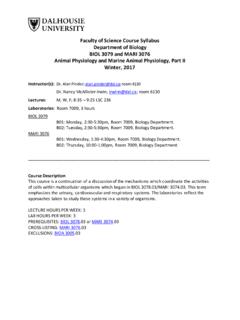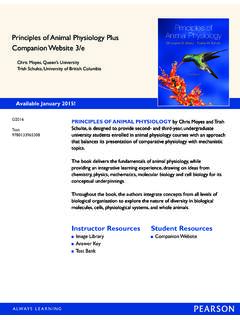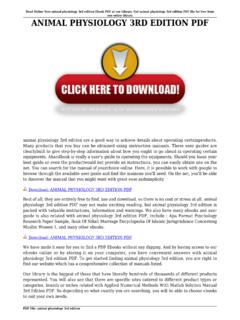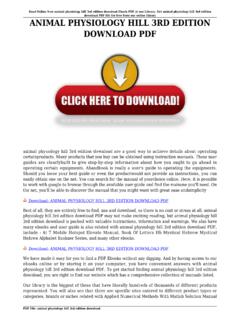Transcription of Animal Physiology Course Syllabus - Cal Poly Pomona
1 Course Syllabus : Animal Physiology (ZOO 428 / 428L) Winter 2016 Page 1 of 6 California State Polytechnic University, Pomona Animal Physiology ZOO 428 / ZOO 428L Winter 2016 Course Syllabus General Course Information Course Course Information Days Meeting Time Location Animal Physiology , Lecture ZOO 428 Class Number: 15129 Monday, Wednesday, and Friday 8:00 9:05 98P 2-007 Animal Physiology , Lab (Section 1) ZOO 428L Class Number: 15756 Monday 6:00 8:50 8-35 Animal Physiology , Lab (Section 2) ZOO 428L Class Number: 15757 Wednesday 6:00 8:50 8-35 Animal Physiology , Lab (Section 3) ZOO 428L Class Number: 15758 Friday 12:00 2:50 8-35 Access Course materials on Blackboard For general Course information, see: ~ Professor: Sepehr Eskandari, Professor, Biological Sciences Department Chair, Academic Senate Office: 8-33A and 98-P2-11 Office Hours: Monday, Wednesday, Friday: 10:00 11:00 AM (98-P2-11) Tuesday, Thursday: 4:00 5:00 PM (8-33A) My schedule is also available online: ~ Phone: (909) 869-4182 Fax: (909) 869-4078 E-mail: Web: ~seskandari/ Laboratory Instructor: Rachel V.
2 Sanchez, , Office: 8-33B Office Hour: Thursday, 2:00 4:00 PM Friday, 11:00 AM 12:00 PM Phone: (909) 869-3575 Fax: (909) 869-4078 E-mail: Course Objectives: To familiarize students with the principles and basic facts of Animal Physiology and with some of the laboratory techniques and equipment used in the acquisition of physiological data. The emphasis will be on mammalian Physiology but there will be some coverage of other vertebrate taxa. The Course will focus on organ-system Physiology , however, cellular and molecular mechanisms will be discussed in Course Syllabus : Animal Physiology (ZOO 428 / 428L) Winter 2016 Page 2 of 6 order to present a current view of physiological principles. Furthermore, emphasis will be placed on nervous, muscular, cardiovascular, respiratory, renal, digestive, and endocrine Physiology . Where appropriate, basic chemical and physical laws will be reviewed in order to enhance and to promote student understanding.
3 The laboratory component of the Course is designed to reinforce the topics discussed in lecture, as well as to familiarize students with some of the laboratory techniques and equipment used in the acquisition of physiological data. Student Learning Outcomes: Upon successful completion of lecture portion of this Course , the students will be able to describe, identify, and/or explain: The various physiological organ-systems and their importance to the integrative functions of the human body. Body fluid compartments and the ionic composition of body fluids. Movement of water and solutes between the fluid compartments. The concept of homeostasis, including set point, negative and positive feedback loops, and compensatory responses. Structure of biological membranes. Function of biological membranes including the role of membrane proteins in catalysis, recognition, and transport.
4 Intracellular and extracellular communication systems. Organization structural and functional organization of the nervous system, including the central and peripheral nervous systems, the autonomic nervous system, and the enteric nervous system. The resting membrane potential. The action potential, action potential propagation along the axon. Chemical messenger molecules of the nervous system, including classical and non-classical neurotransmitters. Synaptic neurotransmission. Basic principles of sensory Physiology . Vision Physiology . Hearing Physiology . Structure and function of skeletal muscle, including excitation-contraction coupling, sliding filament mechanism, force generation, and isometric versus isotonic contractions. Structure and functions of the cardiovascular system, including the mechanical and electrical properties of cardiac muscle function.
5 Excitation-contraction coupling in cardiac muscle. Reflex regulation of blood pressure. Structure and functions of the respiratory system, including lung volumes, gas exchange, and gas transport in blood. Regulation of ventilation. Structure and functions of smooth muscle, including excitation-contraction coupling in smooth muscle. Principles of hormone action, including structure, mechanism of release from endocrine cell, mode of transport in blood, mechanism of action in target cells, and systemic effects of important hormones. Functions of the endocrine system with focus on classic endocrine glands, including the hypothalamus and the pituitary glands, thyroid and parathyroid glands, adrenal glands, endocrine pancreas. The renin-angiotensin-system. Structure and functions of the kidney nephrons, including glomerular filtration, tubular reabsorption, tubular secretion, and excretion.
6 Course Syllabus : Animal Physiology (ZOO 428 / 428L) Winter 2016 Page 3 of 6 Transport of water, ions, and organic molecular across the tubular epithelia. Renal clearance. Urinary concentrating mechanisms. Acid-base balance. Motility, secretion, digestion, absorption in the gastrointestinal system. Upon successful completion of the laboratory portion of this Course , the students will be able to describe, identify, explain, perform, and/or measure: Basic principles of analog and digital data acquisition. The important sections of a scientific paper ( , Abstract, Introduction, Methods, Results, Discussion, References), and how a laboratory report should be written in this format. Extracellular action potentials, and action potential conduction velocity. Spinal monosynaptic and polysynaptic reflexes. Computer simulations of the membrane potential, action potential, and synaptic neurotransmission.
7 Skeletal muscle mechanics, and the electromyogram (EMG). Cardiac cycle and the electrocardiogram (ECG). Effect of autonomic neurotransmitters on the function of myogenic heart. Regulation of arterial blood pressure. Regulation of ventilation. Mammalian renal function and chemical analysis of urine. Required Course Materials: Any textbook of Physiology (human, medical, or Animal Physiology ) published within the last five years will be appropriate. If you are unsure about a given title, please check with Dr. Eskandari. Eskandari Lecture Notes on Physiology . To obtain these notes, the laboratory exercises, as well as other supplementary materials, please visit the Course documents page on Blackboard. Access to the internet to take online quizzes on Blackboard. Prerequisites: BIO 211/211L BIO 310 Schedule of Lectures, Quizzes, and Exams: See the attached Combined Lecture and Laboratory Schedules.
8 For the most up-to-date information, please visit the Course documents page on Blackboard. Course Information and Grading System: Activity Points 10 Online Quizzes (25 points each) 250 7 Laboratory/Activity Reports (25 points each) 175 Histology and Physiology Report 100 Exam I: Midterm Exam 300 Exam II: Midterm Exam 300 Exam III: Final Exam 300 Attendance (see below) 50 Extra Credit: Critique of Course Contents (see below) Up to 25 Course Syllabus : Animal Physiology (ZOO 428 / 428L) Winter 2016 Page 4 of 6 Total 1475 1. Course Materials on Blackboard. Students must use Blackboard to access all Course materials, as well as to complete online quizzes. In addition, limited general Course information ( , Course Syllabus ) is posted here: ~ 2. Online Quizzes. Students are required to complete 10 online quizzes (25 points each) via Blackboard. These quizzes will be composed of multiple-choice, true/false, as well as short answer questions.
9 Quizzes will be based on materials covered in lecture and may also contain information covered in the laboratory component of the Course . The quiz due dates are set to be on Fridays. The quizzes may contain materials covered on Friday of that week. Online quizzes become available online 48 hours before their due date. They may not be taken before or after this 48-hour window. Quizzes that are not completed by the due date will receive a score of zero. 3. Laboratory Reports. There will be 7 reports based on laboratory activities/exercises carried out during the laboratory part of the Course (totaling 175 points; see the Combined Lecture and Laboratory Schedule). Some of these reports simply require completing the worksheets provided. Others require written narrative reports. For the appropriate format of these written reports, see the Guide to the Laboratory/Discussion Report or your laboratory instructor.
10 In addition, there is a Histology/ Physiology report (100 points). Laboratory reports must be submitted in-class on the indicated due dates (see Due Dates at the end of this document). Reports that are not submitted by the due date will receive a score of zero. A student may not submit a report for a laboratory exercise in which he/she did not participate. 4. In-Class Exams. There will be three in-class exams (two midterm exams and a final exam) each worth 300 points. Midterm exams will not be cumulative (they will cover the material since the previous midterm exam or beginning of the Course ). At the time of the regularly scheduled "Final Exam" (during the final exam period), you will take the third exam ( , the final is not comprehensive). Midterm exams will be taken during the student s laboratory period. The three exams will be composed of a mixture of several types of multiple-choice questions, fill in the blank questions, calculation problems, short essays, and will include at least one long essay question.
